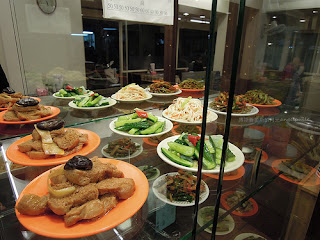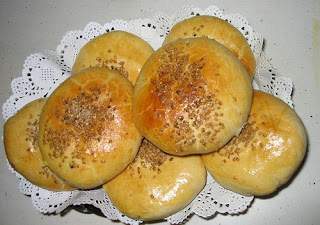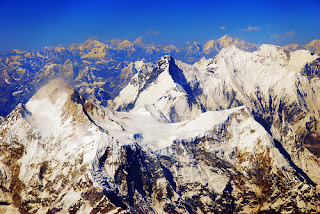Chapter Nine
Shanghai Flavor: A unique flavor for you
There is an old saying that the food of a place can best reflect the local people's favor. How about Shanghai? Without doubt, Shanghai cuisine exposes local flavor. Are you ready to enjoy a food feast in Shanghai?
Shanghai Cuisine, which is not ranked among the four main cuisines of China, has comprised all the favors of the whole ranges of cuisines.
As Shanghai is a miniature of “melting pot” of various cultures and customs, there are only a few native Shanghainese whose grandparents were born in Shanghai. Most Shanghaiese’s grandparents were“immigrants” who came to Shanghai for a new life. They brought to Shanghai their native cooking styles, which enriched and enhanced Shanghai cuisine.
Thus, it makes Shanghai Cuisine one of the most delicate cuisines in the world. It’s highly appraised by gourmets both at home and abroad. Now, people can entertain themselves with all tastes of cuisines without leaving Shanghai, for all“immigrants” have brought their particular style of cooking to Shanghai.
 |
| Shanghai Snacks |
To meet the various demands of visitors from home and abroad, Shanghai has led the country in catering trade. The restaurants in Shanghai not only serve many different regional cuisines, such as Shandong, Sichuan, Guangdong, Huaiyang, Beijing, Zhejiang, Henan, Hunan and Fujian foods, but also provide vegetarian Muslin and other palatable exotic dishes from Europe and East Asia, etc.
Consequently, defining Shanghai Cuisine is a complicated task. Some say it is a more refined version of the cooking style of neighboring provinces. Others say that it absorbs features of all the culinary schools of China. And still others maintain that it is mere soup buns and red braised chicken.
In fact, the Shanghai Cuisine that evolved tends to be a mix of regional cuisines, with an emphasis on seafood, particularly freshwater fish as well as seasonal vegetables.
Standard Shanghainese dishes like Deep-fried Pork Steak and Fruit Salad reflect the Western influence. Old-style Shanghai food was distinguished by its thick stock, heavy sauce, moderate taste and natural flavors. Adopting local products, Shanghai Cuisine is characterized by its ample use of gravies, oil and brown sauce, which preserves the original flavor of the ingredients.
In particular, Shanghai snacks, which can be traced back to the Southern Song Dynasty, are renowned for their unique flavors. A wide selection of Shanghai snacks comprises dozens of pastries, buns, stuffed dumplings and rice and cakes, which are light, fresh, and tasty, and have long been popular among locals and visitors.
 |
| Nanxiang Xiao Long Bao |
Refreshments and snacks from all over China and the world are available in Shanghai. Local snacks in Shanghai have their specialties and should not be missed. The following are some typical Shanghai snacks for your reference--
Xiao Long Bao: Shanghai-style Xiao Long Bao originated in the town of Nanxiang in the suburbs of Shanghai. The buns are traditionally steamed in bamboo baskets. People also give it is an English name – soup dumpling.
The fillings of Xiao Long Bao--the small buns are served hot in the bamboo baskets in which they were steamed, usually on a bed of dried leaves. The buns are usually dipped in Chinkiang vinegar with ginger slivers. Unlike other stuffed buns, or Baozi, found throughout China, the fillings of Xiao Long Bao are traditionally broth and meat, while other fillings are also available. The broth wrapped as the filling is the essence of this food. When you bite a Xiao Long Bao, the broth inside will immediately flows out. The delicious taste will make you become a greediness person who only wants to eat more Xiao Long Bao.
 |
| Da Zha Xie |
Da Zha Xie: Da Zha Xie is a special type of crab found in rivers, and is normally consumed in the winter. The crabs are tied with ropes or strings, placed in bamboo containers, steamed and served. There few other artificial ingredients added to the dish yet it tastes fantastically good. Da Zha Xie is usually consumed with vinegar. Locals are also quite fussy about when to consume male crabs and when to consume female crabs.
Smoked Fish Slices: It’s an ideal menu for those who like highly spiced food. the Smoked Fish Slices (fresh fish marinated and spiced to taste like smoked fish) make a delicious, unusual hors doeuvre, while the strong-tasting Stewed Pork Flavoured with Dried Squid dish is offset by the vegetable rice to make a substantial meal.
 |
| Crab-Yellow Pastry |
Crab-Yellow Pastry: this round yellow pastry looks like the shell of a cooked crab, therefore it is named Crab-Yellow Pastry. The main raw material for this snack is oil-mixed dough. The dough is split into small pieces, stuffed and squashed to form a flat round cake. It is then wrapped with a layer of sesame and finally baked in an oven.
The Crab-Yellow Pastry usually has a salty or sweet flavor. The salty pastries are stuffed with shallot oil, pork, crab or shrimp; the sweet ones with sugar, roses, sweetened bean paste or Chinese date paste.
Fried Stuffed Bun: fried Stuffed Bun with nearly 100 years' history is a typical indigenous snack of Shanghai. The wraps of the buns are made of semi-fermented paste, and the stuffing is made of pork, shallot, ginger, soy, pepper, and sesame oil. The stuffed buns are put in rows in a big pan and fried, being sprayed with water several times during cooking. Finally, sesame and shallot are sprinkled on the buns, and then the wonderful Fried Stuffed Buns are prepared.
 |
| fried Stuffed Bun |
With a thin and soft wrap, a golden-colored and crispy bottom, and delicious meat, this snack tastes best when served hot. Fried Stuffed Buns were first served in many teahouses in old Shanghai. Special fried stuffed bun restaurants began to appear in 1930s. At present, there are hundreds of such restaurants. The stuffing is varied to include chicken, crab and shrimp.
Recommended restaurants—
Guang Ming Cun Restaurant: it was opened in 1948, is remarkable for dim-sum and snacks with over ten dishes awarded "Shanghai specialty snacks". Those snacks are highly appreciated including juicy chicken wanton soup, fired crabmeat stuffed bun and steamed pork stuffed bun. Some signature dishes are superb like crystal shrimp, peppery beef filet with honey, crispy duck, turtle and snake soup with herbs, eye brow-shaped crispy cake and milky date. The restaurant is popular with customers for its inexpensive piece, authentic taste, comfortable ambience and excellent service.
Specialty: juicy chicken wanton soup, fires crab meat stuffed bun
 |
| Lu Bo Lang Restaurant |
Lu Bo Lang Restaurant: Lu Bo Lang Restaurant, located by nine-twist-bridge at Old City God Temple, has an archaic, elegant and peaceful surrounding matching the elegance of Mid-Pond-Pavilion tea house next door. It is well-known by carefully selected raw materials and meticulous preparations, highly praised by gourmands from home and abroad. The signature dish "osmanthus cake" is so sticky in texture that gets stuck on plate or chopsticks but not tooth and feels smooth in the mouth carrying faint fragrance of rice wine, which puzzled former U.S President Clinton who had practiced with chopsticks for one month.
Specialty: eye brow-shaped crispy cake, sticky osmanthus cake, eight-treasure duck
Wu Fang Zhai Dim-sum Restaurant: Wu Fang Zhai Dim-sum Restaurant was established in 1958. The pastries are made with five recipe-made natural herbal fillings, namely, rose, osmanthus, pine, lotus (or mint), hence the name "Wu Fang Zhai" (literally "five fragrance restaurant"). They are varied in seasons such as glutinous rice ball with red bean paste in Pure Brightness Festival, pyramid shaped sticky rice dumpling in bamboo leaves, Double-Nine cake at the festival, eight treasure rice and sweet rice cake in Spring Festival. The "three sweetness", namely sweet taro, sweet potato and sweet rice-filled lotus roots are most sought-after in decades.
Specialty: glutinous rice dumpling in bamboo leaves, pastries and cakes
--Shanghai is an ideal place for you to find out delicious food at every corner of its streets. Watering about various Shanghai dishes now? Or you have other recommended Shanghai snakes or good restaurants, please share with me. No doubt, I’m a people fancy of eating delicious tastes.














